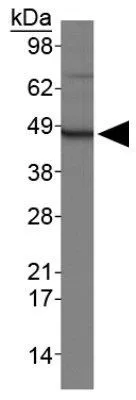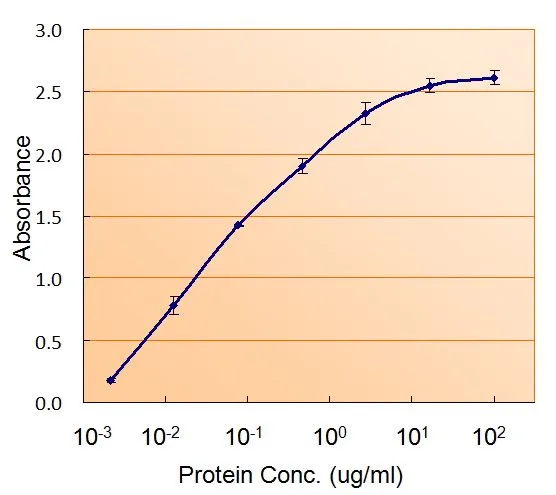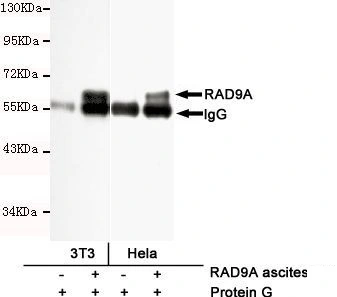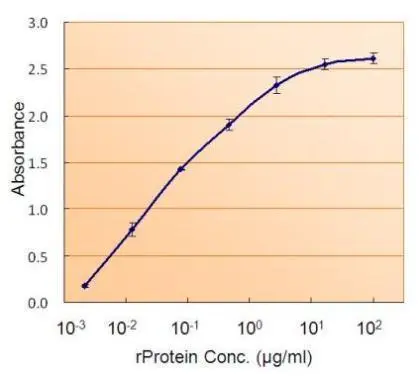![IHC-P analysis of human prostate adenocarcinoma tissue using GTX13600 Rad9 antibody [93A535]. Dilution : 5 microg/ml Antigen retrieval : 10 mM sodium citrate buffer, pH 6.0 IHC-P analysis of human prostate adenocarcinoma tissue using GTX13600 Rad9 antibody [93A535]. Dilution : 5 microg/ml Antigen retrieval : 10 mM sodium citrate buffer, pH 6.0](https://www.genetex.com/upload/website/prouct_img/normal/GTX13600/GTX13600_413_IHC-P_w_23060620_687.webp)
IHC-P analysis of human prostate adenocarcinoma tissue using GTX13600 Rad9 antibody [93A535]. Dilution : 5 microg/ml Antigen retrieval : 10 mM sodium citrate buffer, pH 6.0
Rad9 antibody [93A535]
GTX13600
ApplicationsImmunoFluorescence, ImmunoPrecipitation, Western Blot, ImmunoCytoChemistry, ImmunoHistoChemistry, ImmunoHistoChemistry Paraffin
Product group Antibodies
TargetRAD9A
Overview
- SupplierGeneTex
- Product NameRad9 antibody [93A535]
- Delivery Days Customer9
- Application Supplier NoteWB: 1 - 2 microg/ml. ICC/IF: 1:10 - 1:500. IHC-P: 1:10 - 1:500. IP: 1:10 - 1:500. *Optimal dilutions/concentrations should be determined by the researcher.Not tested in other applications.
- ApplicationsImmunoFluorescence, ImmunoPrecipitation, Western Blot, ImmunoCytoChemistry, ImmunoHistoChemistry, ImmunoHistoChemistry Paraffin
- CertificationResearch Use Only
- ClonalityMonoclonal
- Clone ID93A535
- Concentration0.5 mg/ml
- ConjugateUnconjugated
- Gene ID5883
- Target nameRAD9A
- Target descriptionRAD9 checkpoint clamp component A
- Target synonymsRAD9, cell cycle checkpoint control protein RAD9A, DNA repair exonuclease rad9 homolog A, RAD9 homolog A, hRAD9
- HostMouse
- IsotypeIgG1
- Protein IDQ99638
- Protein NameCell cycle checkpoint control protein RAD9A
- Scientific DescriptionThis gene product is highly similar to Schizosaccharomyces pombe rad9, a cell cycle checkpoint protein required for cell cycle arrest and DNA damage repair in response to DNA damage. This protein is found to possess 3 to 5 exonuclease activity, which may contribute to its role in sensing and repairing DNA damage. It forms a checkpoint protein complex with RAD1 and HUS1. This complex is recruited by checkpoint protein RAD17 to the sites of DNA damage, which is thought to be important for triggering the checkpoint-signaling cascade. Use of alternative polyA sites has been noted for this gene. [provided by RefSeq]
- Storage Instruction-20°C or -80°C,2°C to 8°C
- UNSPSC12352203

![WB analysis of Rad9 recombinant protein using GTX13600 Rad9 antibody [93A535]. Dilution : 2 microg/ml WB analysis of Rad9 recombinant protein using GTX13600 Rad9 antibody [93A535]. Dilution : 2 microg/ml](https://www.genetex.com/upload/website/prouct_img/normal/GTX13600/GTX13600_963_WB_w_23060620_375.webp)

![IHC-P analysis of ovary tissue using GTX83735 RAD9A antibody [5D9]. Antigen retrieval : Heat-induced epitope retrieval by 10mM citrate buffer, pH6.0, 100oC for 10min. Dilution : 1:50](https://www.genetex.com/upload/website/prouct_img/normal/GTX83735/GTX83735_1778_IHC-P_w_23061420_300.webp)
![IHC-P analysis of breast adenocarcinoma tissue using GTX83736 RAD9A antibody [7B11]. Antigen retrieval : Heat-induced epitope retrieval by 10mM citrate buffer, pH6.0, 100oC for 10min. Dilution : 1:50](https://www.genetex.com/upload/website/prouct_img/normal/GTX83736/GTX83736_1780_IHC-P_w_23061420_979.webp)




